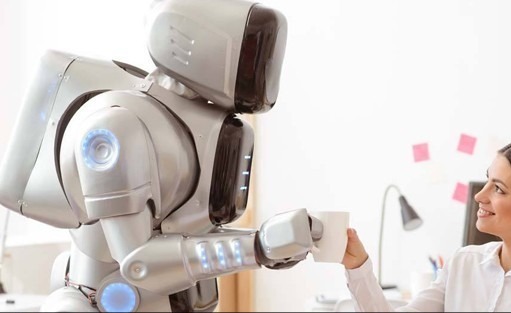In recent years, with the impact of labor costs and demographic structure, the robot industry has grown rapidly, and robots such as industrial robots and home robots have been able to enter our field of vision. According to the information given by the International Robotics Federation, by 2020, the world With 1.7 million new industrial robots applied to factories around the world, more efficient and flexible production will be achieved.

And the family robot is expected to become the entrance of smart home, leading the next era. In our present moment, high-tech intelligent robots have become the topic of discussion. What problems exist in the robot industry? What new technologies and trends have emerged in 2017? What is the development of robots in the coming year? Below, the author will talk about the current intelligent robot industry with the development of smart robots this year.
·Technical level accelerates iteration Traditional application industry will also usher in intelligent transformation and upgrading
The robot industry has entered the consumer market only in recent years. Coupled with the particularity of this industry, it is very different from most existing digital products. For now, robots are divided into Three categories, home robots, industrial robots and special robots.
In 2017, the family robots in the market became more prosperous. Not only the technical level accelerated the iteration, but also related traditional application industries will usher in intelligent transformation and upgrading. During this year, many new robot brands have emerged as well as some robot brands. The market was developed and eliminated.
Technical breakthrough! The smart robot industry spurt outbreak is coming soon
At the 2017 World Robotics Conference, the audience broke through 240,000 and signed a contraction of 8 billion yuan.
With the development of the market, many new products have emerged in the market segment, such as educational robots designed for children, intelligent audio products designed for adults, accompanying robots designed for the elderly, security robots, etc. As the market becomes more active, it becomes more mixed.
With the development of the market, many new products have emerged in the segment of the intelligent robot industry.
In addition, in July this year, China’s “New Generation Artificial Intelligence Development Plan” clearly proposed a three-step strategic goal for the development of artificial intelligence in China. The first step is to initially establish artificial intelligence technical standards and services by 2020. The system and industrial ecological chain have nurtured some of the world's leading artificial intelligence backbone enterprises. The artificial intelligence core industry has a scale of more than 150 billion yuan, driving the related industries to exceed 1 trillion yuan, which fully proves that China attaches great importance to the robot industry.
Made in China 2025: Increased production efficiency and reduced costs China's industrial robot market share reached 31%
Of course, besides the C-end robot, the B-end industrial robot can be said to be the representative of the development of the national robot. With the full implementation of China's 'Made in China 2025', the problems of system complexity and data incompatibility are also overcome to some extent. In 2017, China, South Korea, Japan, the United States, and Germany accounted for three-quarters of the market, and China has become the world's largest robot market.
With the full implementation of China's 'Made in China 2025'.